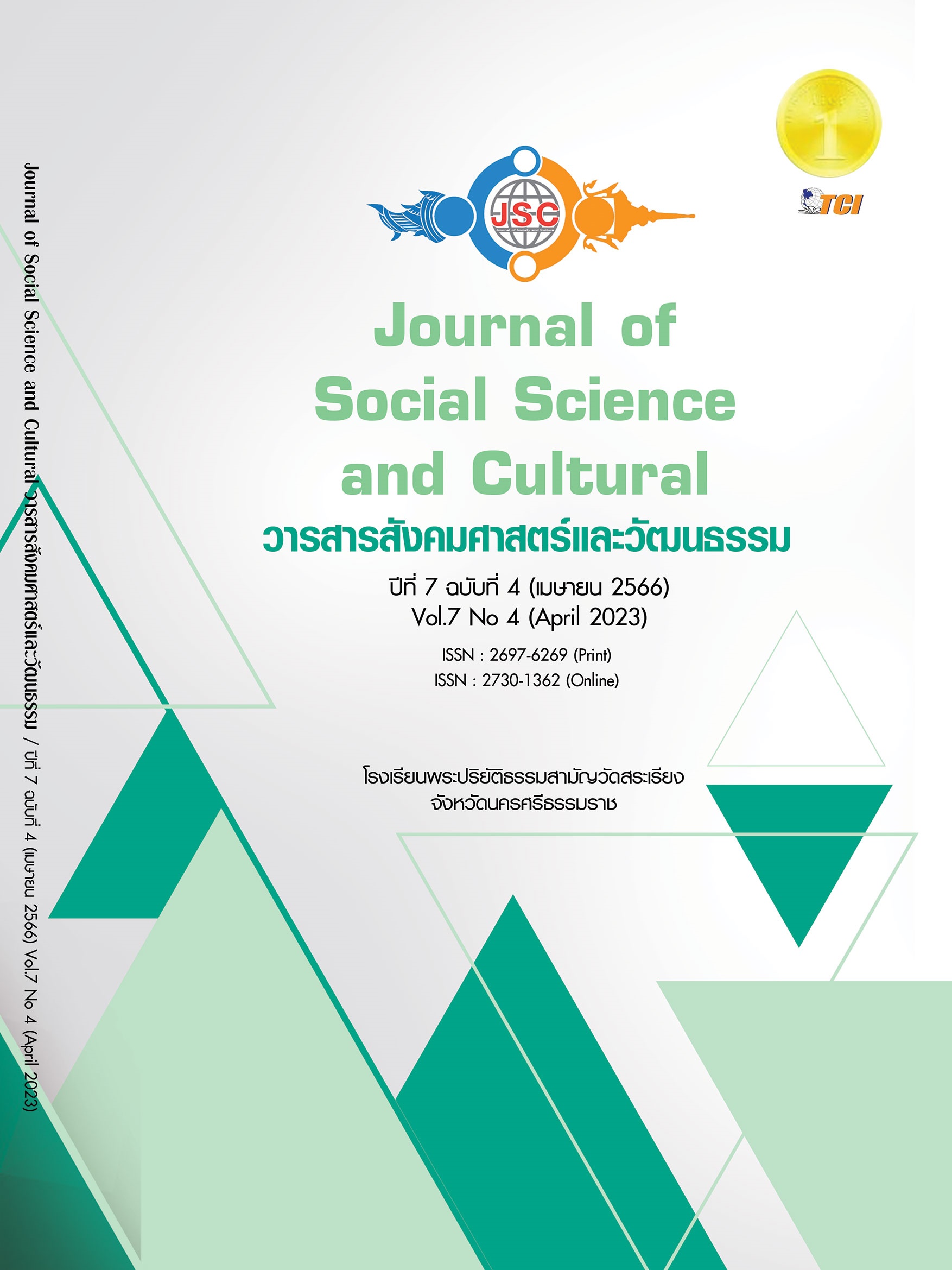FINANCIAL LITERACY OF THE UNDERGRADUATE STUDENTS IN PRIVATE HIGHER EDUCATION
Main Article Content
Abstract
The purpose of this quantitative research were to 1) study the financial literacy of the undergraduate Students 2) compare demographic factors with the financial literacy of the of the undergraduate Students. The sample of 350 undergraduate Students were selected by purposive random sampling. Questionnaires were used as a tool for data collection, 1) For the financial knowledge, the difficulty valued Item-Total Correlation was .20 – .67, the reliability of each measure (KR – 20) was .89 and Item-Total Correlation was .20 or higher, 2) The financial attitudes and the financial behavior, Item-Total Correlation was .20 or higher and the reliability of each measure ranged from .92 to .97. The obtained data and the hypothesis were later analyzed and test by frequency, percentage, mean, standard deviation, the One-Way analysis of variance : ANOVA.The result revealed the undergraduate Students samples have moderate financial literacy (Mean = 12.36 ; S.D. = 2.10). Their financial knowledge have the least financial literacy (Mean = 4.39 ; S.D. = 1.72), their financial attitudes (Mean = 4.00 ; S.D. = 0.67) and financial behavior (Mean = 3.97 ; S.D. = 0.68) have the financial literacy is consider good, show quite an appropriate financial practice.GPA which is demographic factors affect decision to the financial literacy of the undergraduate Students at significant level of .05.
Article Details
References
Atkinson, A. et al. (2016). OECD/INFE International Survey of Adult Financial Literacy Competencies. Retrieved January 18, 2023, from
Bank of Thailand. (2020). Report of the 2020 Thai financial skills survey. Bangkok: Financial Literacy Promotion Department, Bank of Thailand.
Bloom, B. S. (1964). Taxonomy of education objective: The classification of educational goals: Handbook II: Affective domain. New York: David Mckay.
Dewey, J. (1926). Democracy and Education. Boston: Hough ton Miffin.
Ergun, K. (2018). Financial Literacy among university students: A study in eight European countries. International Journal of Consumer Studies, 42(1), 2-15.
Inlakorn, S. (2020). An analysis of financial literacy of the students at Kasetsart University Sri Racha Campus. Interdisciplinary Sripatum Chonburi Journal, 6(2), 78-90.
Office of the Registrar and Educational Data Processing. (2022). Report of the Number of Student Data 2022. Nonthaburi, Thailand: Panyapiwat Institute of Management.
Saiyot, L. & Saiyot, A. (1985). Principles of Educational Research. Bangkok: Suksaporn.
Sungkapun, S. (2014). Why 21st century skills in the 21st century skills article. In In Doctoral Dissertation. Mahasarakham University.
Thomson, S., & De Bortoli, L. (2017). PISA 2015: Financial literacy in Australia. Australian Council for Educational Research (ACER). Retrieved January 18, 2023, from https://research.acer.edu.au/ozpisa/27
Yamane, T. (1973). Statistics: An Introductory Analysis (3rd ed). New York: Harper and Row.


